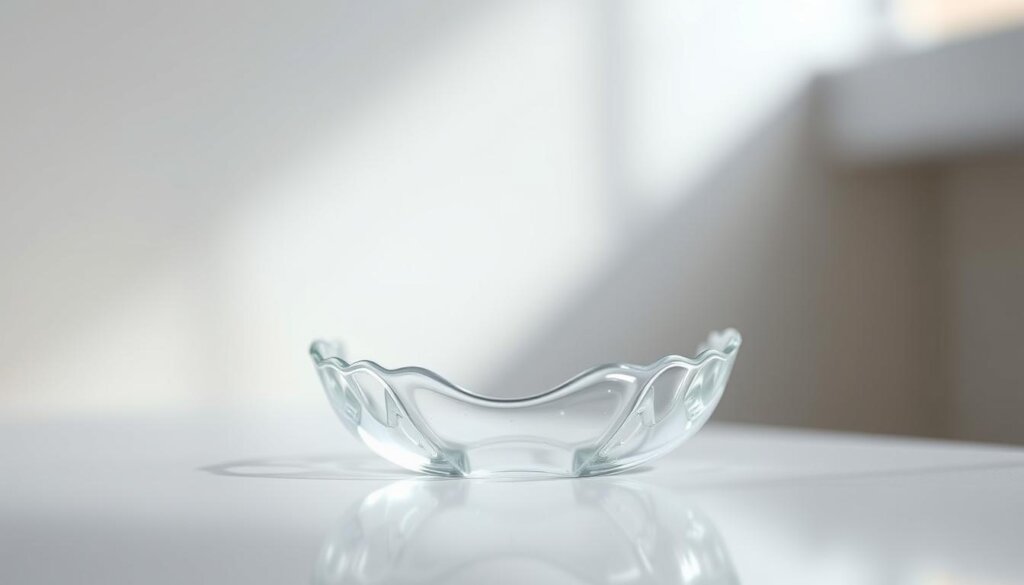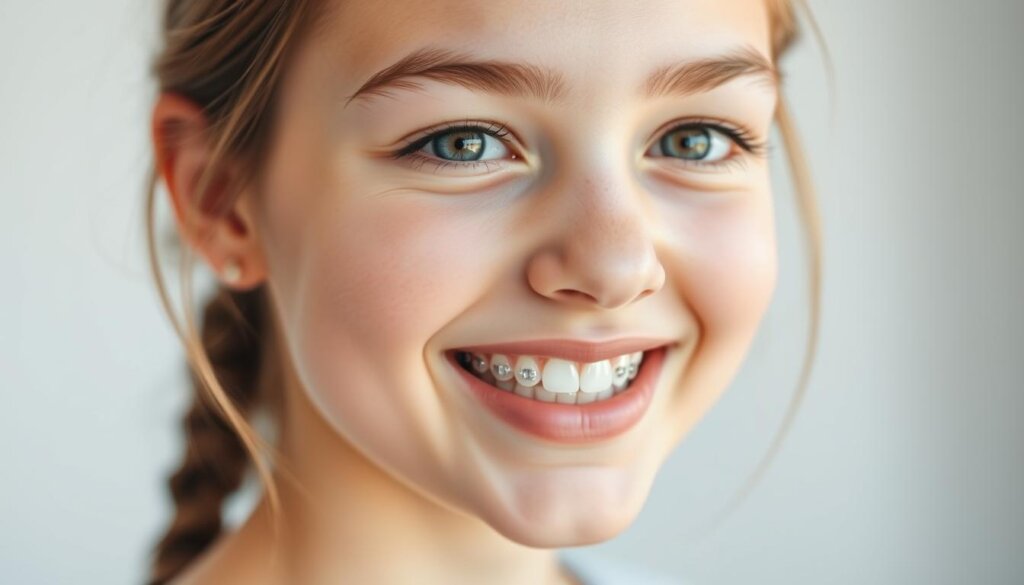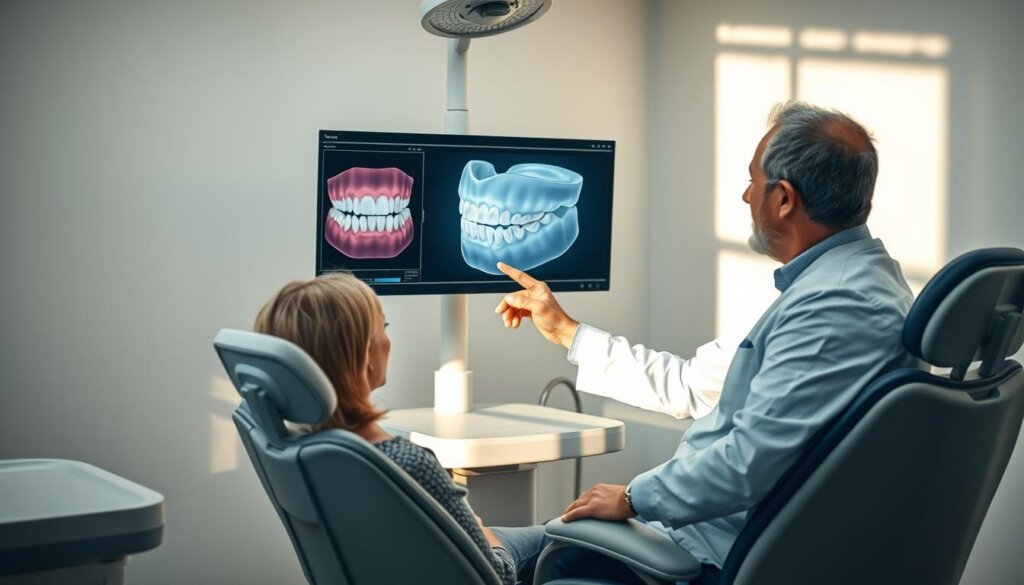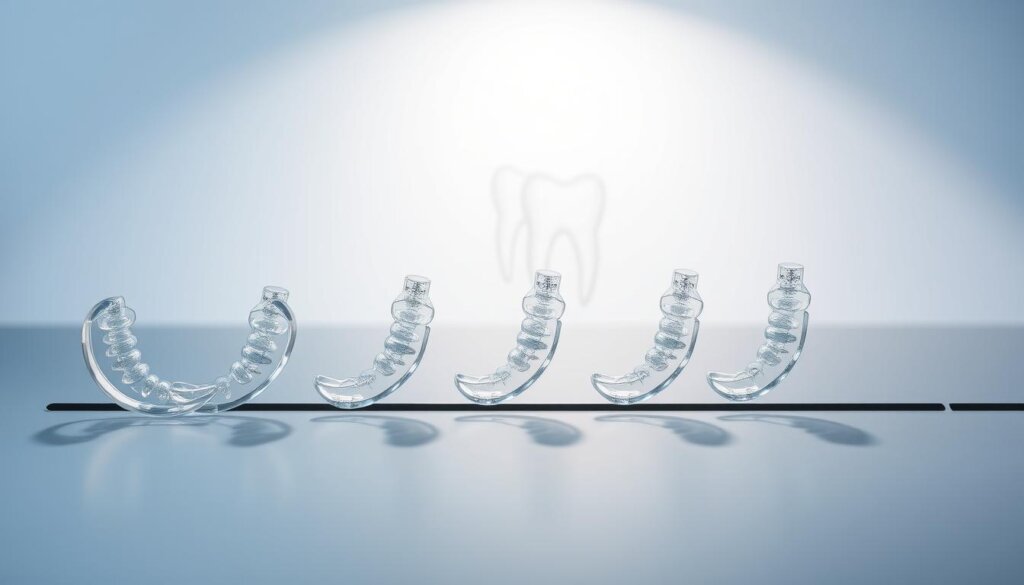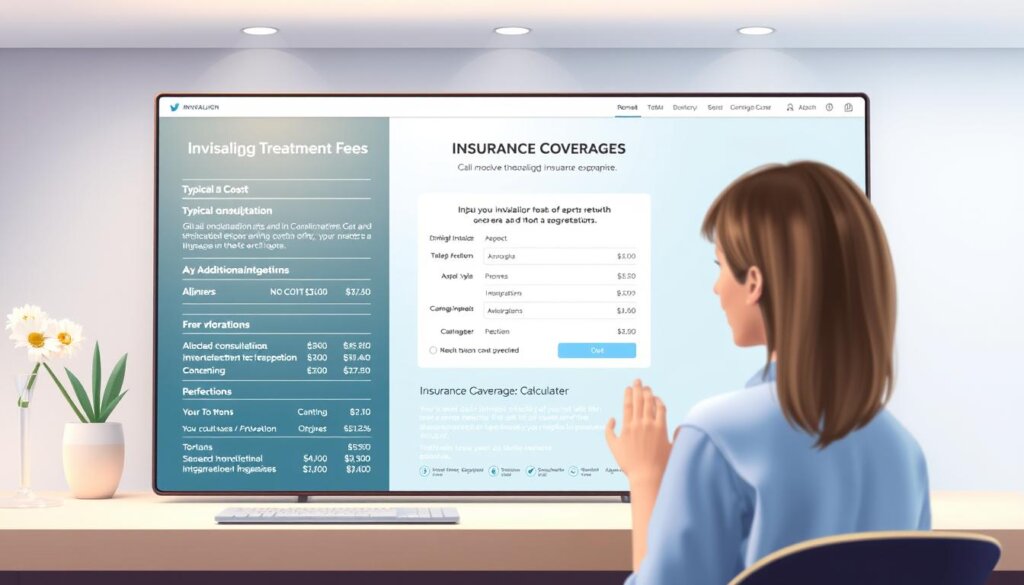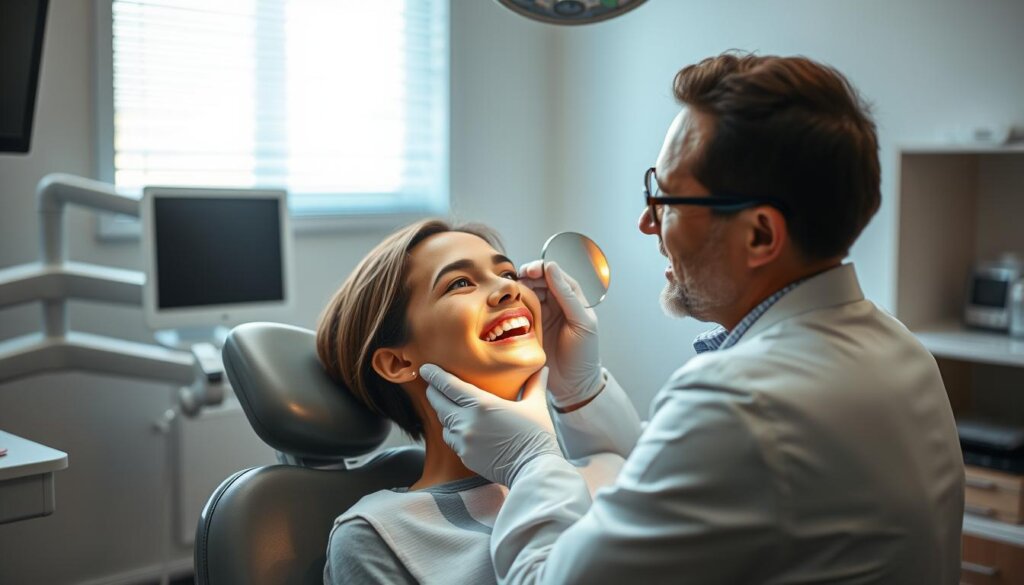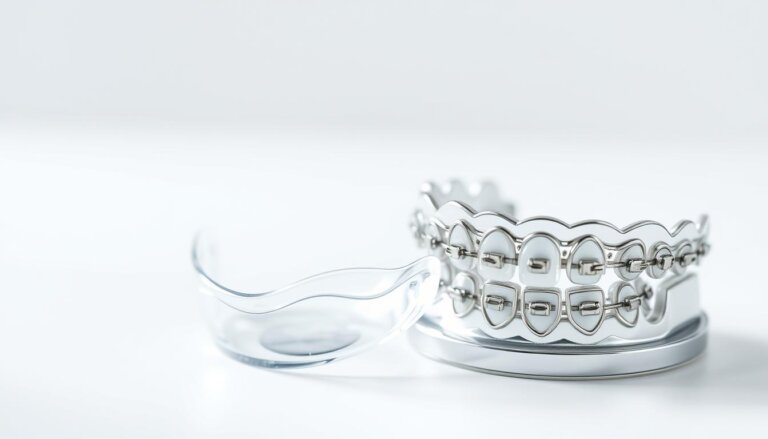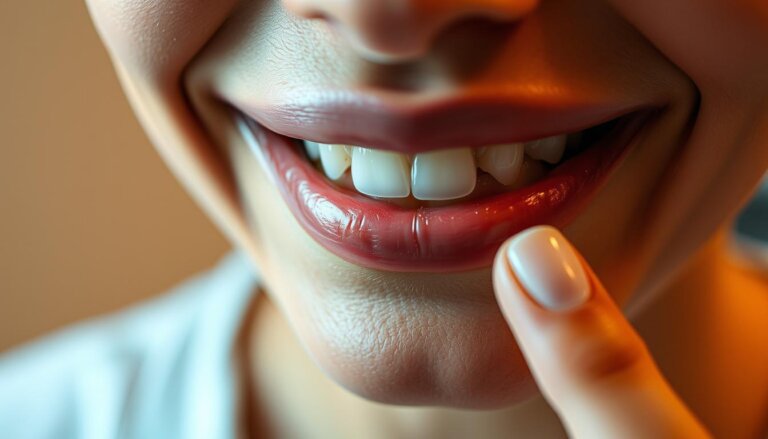Who is a good candidate for Invisalign treatment?
Invisalign changed orthodontics big time. Yet, there’s a fact we can’t ignore: about 17.2% of Invisalign patients had to switch to braces later. This raises the big question, Who is a good candidate for Invisalign treatment? Knowing the Invisalign candidacy requirements is key. They are the foundation of this orthodontic solution.
Many people like Invisalign because it’s less noticeable and comfy. But, getting the best results means really understanding your dental health. Studies show, most patients needed more than 2 scans. Only 6% didn’t need any extra scans. Considering the average duration of Invisalign treatment is nearly 23 months, picking the right candidates is crucial.
Those who switched to braces ended up needing about 81 more aligners and almost 7 extra months of treatment. These numbers show how important it is to carefully check who could really benefit from Invisalign. And to have a real chat about what to expect from this treatment.
Key Takeaways
- Comprehensive evaluation is crucial to determine if one is a good candidate for Invisalign treatment.
- Not all patients are suitable for Invisalign; some cases may require traditional orthodontic approaches.
- Average treatment duration and the number of refinement scans can indicate the complexity and suitability of Invisalign for individual cases.
- Understanding the Invisalign candidacy requirements can prevent potential extended treatment times and additional costs.
- Being well-informed of the intricacies of Invisalign ensures alignment of expectations with this orthodontic solution.
Understanding Invisalign
Today, many people looking for a way to straighten their teeth want it to be quick and not noticeable. Invisalign offers just that with clear aligners. These aligners have changed how we fix teeth and deal with dental problems.
What is Invisalign?
Invisalign is a modern method to straighten teeth. It uses clear, custom-made aligners to move teeth into place gradually. These aligners are almost invisible and can be taken out to eat, drink, and brush your teeth. Since 1997, Invisalign has helped over 17 million people, making it a top choice for fixing teeth.
How does Invisalign work?
The Invisalign process means wearing a set of aligners for two weeks at a time. Each one is designed to pressure certain teeth to move. Orthodontists use 3D technology to plan out how the teeth will shift. This method works well for fixing crooked teeth, overcrowding, overbites, underbites, and gaps.
Benefits of Invisalign Treatment
Invisalign clear aligners have changed how we think about braces. They look good and are comfy to wear, making them popular. People love that they don’t stand out like traditional braces do. Invisalign is leading the way in making braces that look good and feel right for everyone.
Aesthetic Appeal
Invisalign aligners are almost invisible, which means you can keep smiling without worry. Many people don’t like how metal braces look. These clear aligners are hard to see and won’t mess with your style, which adults and teens really like.
Comfort and Convenience
Invisalign aligners are known for being nice to wear and easy to use. They aren’t stuck in your mouth, which means they don’t hurt and you won’t get cuts from wires. You can take them out before eating and they’re easy to clean, avoiding teeth problems that fixed braces might cause.
Types of Dental Issues Addressed
Invisalign technology works well for many dental problems, especially if your needs are mild to moderate. It uses a set of custom aligners. These aligners gently move teeth to the right spot. They fix alignment problems and make smiles look better. Let’s look at some common issues Invisalign can fix:
Mild to Moderate Crookedness
Crooked teeth aren’t just a problem for how your smile looks. They can also hurt your oral health. Invisalign can straighten teeth well. It uses a precise plan for each person. This makes sure every movement of the teeth improves their position and your smile.
Gaps Between Teeth
Spaces between teeth can also be fixed with Invisalign. Gaps are not only about looks—they can lead to gum problems too. The aligners work to bring teeth closer. This gets rid of gaps and makes your smile more even.
Every Invisalign plan is made just for the person’s teeth. That’s why many people choose it for fixing mild to moderate issues. They don’t want the look of regular braces. Invisalign’s clear aligners offer a less noticeable treatment. They not only fix gaps but also help with overall dental health.
Invisalign is a great, low-key way to handle teeth crowding or spacing. It’s perfect for those who want to better their oral health and look good.
Age Considerations for Invisalign
When it comes to orthodontic treatments like Invisalign, age is an important factor. Invisalign aligners are chosen by both teens and adults, each with their own needs. This shows how Invisalign can fit many different ages.
Treatment for Teens
Teens worry a lot about how they look due to social pressure. Invisalign for teenagers is great because it’s hard to see. So, it doesn’t affect their confidence or everyday life. It’s also made just for their growing teeth and jaws, fixing problems without anyone noticing.
Treatment for Adults
Adult orthodontic treatment
has to work well but also not be too obvious. Adult orthodontic treatment with Invisalign does just that. These aligners are a low-key way to improve dental health. For adults, especially in the workplace, not having metal braces is a big plus.
| Age Group | Key Considerations | Benefits of Invisalign |
|---|---|---|
| Teenagers | Appearance, Peer Perception | Discreet treatment, minimal lifestyle disruption |
| Adults | Professional Appearance, Treatment Duration | Subtlety, efficiency, and comfort |
Oral Health Requirements
To find out if you can get Invisalign treatment, checking your oral health is very important. You need to have really good dental health. That means your gums and teeth must be in top shape. Also, not having big dental problems is crucial for this check-up.
The first step is an orthodontic evaluation. This makes sure that people with healthy mouths can start Invisalign. Here’s what dentists look for:
Healthy Gums and Teeth
It’s vital to have strong gums before any teeth-straightening treatment. This helps keep your teeth stable and lowers the chance of gum disease while you get treatment. So, having gums that are not inflamed or diseased is a must.
No Severe Dental Issues
Also, big teeth problems may need different types of treatment. Invisalign works best for fixing small to medium tooth misplacements. So, really tough cases might need stronger orthodontic work.
These rules are looked at carefully during the first meeting. This ensures that everyone who chooses Invisalign can safely and effectively get the smile they want.
Lifestyle Factors
The Invisalign journey requires both a clinical approach and lifestyle changes. It demands strong dedication. Following the plan and keeping your teeth clean are key for success. This section looks at the importance of dedication and cleanliness in Invisalign’s success.
Commitment to Treatment
For Invisalign to work well, patients must strictly follow the treatment plan. Wearing the aligners for 20 to 22 hours a day is crucial. This consistent use is vital for proper teeth alignment.
Hygiene Practices
Good dental hygiene is important for Invisalign’s success. Proper hygiene helps avoid problems like cavities or gum disease. These issues can hamper the treatment’s progress. Brushing often and using tools to clean between teeth can keep both your gums and aligners clean.
Conclusion: Wearing aligners as prescribed and maintaining good dental hygiene are essential. These practices ensure treatment goals are met on time and with the best results.
Consultation Process
Getting a better smile with Invisalign starts with a detailed orthodontic consultation. This first meeting with dental experts is key. It helps figure out your dental structure and what you need.
Initial Assessment
At the first consultation, dentists see if Invisalign is right for you through a Invisalign candidacy evaluation. They look at your dental history, check your teeth and gums, and talk about what you hope to achieve.
Digital Scanning Technology
3D dental imaging is crucial in modern orthodontics. Thanks to new digital scanning tech, dentists get clear, detailed views of your teeth and jaw. This tech helps diagnose problems accurately and tailor Invisalign aligners to fit perfectly.
This tech allows for aligners that fit just right and lets us predict how your smile will improve. It makes the treatment plan better and more effective.
| Assessment Feature | Benefits |
|---|---|
| Detailed Oral Examination | Identifies suitability for Invisalign |
| 3D Imaging Utilization | Enables accurate aligner customization |
| Patient Expectation Discussion | Aligns treatment with individual goals |
Using advanced 3D dental imaging during the orthodontic consultation boosts Invisalign’s success and makes patients happier. This approach makes sure patients are well-informed and know what to expect from their treatment.
Duration of Treatment
Getting a perfect smile with Invisalign is a personalized journey for each person. How long someone needs to wear Invisalign depends on several things. After the first meeting and detailed dental checks, a custom treatment plan is made.
Average Timeline for Invisalign
On average, the Invisalign journey takes about 22.8 months. But remember, this time can change a lot because everyone’s teeth are different.
Factors Affecting Treatment Duration
Many things can change how long you need Invisalign. First, the type of dental problem matters. Complex issues might take more time.
- The complexity of the dental issue: More intricate adjustments generally require longer treatment periods.
- Refinement scans requirement: Needed for checking if the aligners are working right. They might make treatment longer if more fixes are needed.
- Adherence to treatment protocol: How well Invisalign works depends a lot on wearing the aligners as told.
Knowing these factors helps set realistic expectations. It also shows why treatment might go past the initial time planned.
Financial Considerations
Starting Invisalign treatment means knowing about the costs. It’s important to compare the Invisalign treatment cost to traditional braces. This helps with financial planning for dental care. Most dental insurance, including orthodontic insurance plans, help pay for Invisalign just like they do for standard braces.
| Treatment Type | Average Cost | Insurance Coverage |
|---|---|---|
| Invisalign | $3,000 – $7,000 | Partially covered by many plans |
| Traditional Braces | $2,500 – $6,000 | Generally covered by most plans |
When looking at Invisalign and braces, talking to dental providers and insurance reps is key. They’ll help you understand your coverage and what you’ll have to pay. Align your orthodontic insurance plans with your treatment to get the most benefits and reduce stress.
This comparison shows the costs for both options. It also points out the need to carefully look at your insurance. Knowing about the financial side and insurance is crucial, whether you choose Invisalign or traditional braces.
Common Misconceptions About Invisalign
Invisalign has revolutionized the way we treat misaligned teeth. Yet, some wrong ideas may stop people from choosing this modern approach for big dental corrections. By clearing up these myths, we understand who really benefits from Invisalign and how much it can help.
Many think Invisalign can take the place of all other orthodontic treatments, no matter how complex. Even though Invisalign can now fix more complicated dental problems, it’s not the right choice for every severe dental correction needed in some cases.
Let’s dive into some important questions and facts about using Invisalign:
Is Invisalign for Everyone?
Invisalign was first made for adults who wanted a less noticeable way to straighten their teeth. Now, it’s also an option for teens with certain orthodontic issues. It works well for many with mild to moderate problems, but not for those needing major bite correction. This is because Invisalign’s aligners can’t push teeth with as much force as regular braces.
Invisalign and Severe Cases
Invisalign might not be effective for very severe dental corrections. These situations usually require traditional braces that can apply more force and precision for big tooth movements. However, Invisalign is perfect for cases it’s suited to, improving dental structure quietly and efficiently.
Talking to a dental expert is key to figure out if Invisalign is right for you. A professional assessment can pinpoint the best way to fix your teeth, making sure you get the treatment that fits your needs.
Post-Treatment Maintenance
After your teeth are straightened with Invisalign, it’s very important to take care of them afterward. We’ll talk about how to keep your teeth healthy and in place. This includes wearing dental retainers and keeping up with dental care.
Retainers After Treatment
Once you’re done with Invisalign, wearing retainers is a must. They stop your teeth from moving back to where they were. It’s a crucial step to make sure your teeth stay put. You’ll need to follow your orthodontist’s advice on when to wear them, but less over time as your teeth get used to their new spot.
Long-Term Oral Care
Keeping your teeth aligned over time means being really good about cleaning your teeth. You should go to the dentist regularly, brush and floss well, and have check-ups to watch your teeth. This hard work stops your teeth from moving and keeps your smile looking great. Sticking to these habits means your straightened teeth will last without issues.
- Regular dental consultations to monitor alignment
- Adherence to retainer usage as recommended
- Daily brushing and flossing to maintain oral health
Knowing how important wearing retainers and keeping your teeth straight is key to keeping your Invisalign results for a long time. Being consistent with aftercare is essential. It helps keep your teeth healthy and looking good.
Success Stories
Invisalign is famous for fixing teeth with a modern touch. People with better smiles tell their stories about its effects. These stories prove Invisalign can tackle various dental problems effectively.
Patient Testimonials
People who’ve used Invisalign often share their thanks. They talk about moving from feeling shy to feeling confident. They say Invisalign changed their smiles and how they connect with others.
Before-and-After Comparisons
Before-and-after photos show Invisalign’s impressive results. These photos clearly show the progress made. They prove Invisalign works, offering clear evidence of improved smiles.

